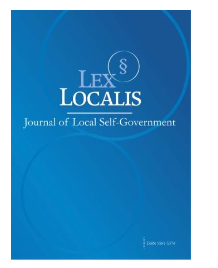THE LOGO AS A KEY ELEMENT OF MUNICIPAL BRAND IDENTITY: THE PRACTICE OF BUDAPEST’S DISTRICTS AND HUNGARY’S COUNTY-LEVEL CITIES
DOI:
https://doi.org/10.52152/pxp3fk77Keywords:
local governance, municipal branding, place identity, visual communication, logo design, city branding, local symbols, urban image.Abstract
A brand’s identity typically consists of three main elements: the brand name, the slogan, and the logo. Therefore, it is essential to study these elements also in the context of municipal branding. This paper focuses on the third component, the logo, a term derived from the Greek word logos, meaning “word.” In this sense, a logo can be understood as the visual representation of the “word,” that is, the brand name, presented in the most distinctive and appealing way possible. But how successful are Hungarian municipalities in this regard? To answer this question, the study examined the logos of 47 urban entities in total, including Budapest’s 23 districts and Hungary’s county-level cities. The analysis found that 41 out of the 47 had a distinct logo. The findings reveal that the capital city of Budapest and 19 of its districts have a uniquely designed logo, while 4 districts use their coat of arms for branding purposes. Among the examined county seats and county-level cities, 21 use a unique logo and 2 rely on their traditional heraldic symbols. The collected logos were first analyzed individually to interpret their potential symbolism and intended visual communication. Then, they were grouped according to the color schemes used. Finally, the study assessed how effectively the logos reflect the local identity and distinctive features of each city or district.
Downloads
Published
Issue
Section
License
Copyright (c) 2025 Lex localis - Journal of Local Self-Government

This work is licensed under a Creative Commons Attribution-NonCommercial-NoDerivatives 4.0 International License.








